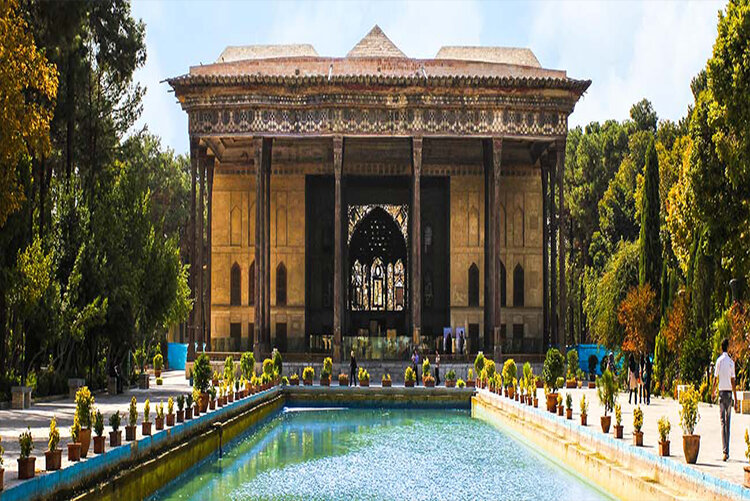Chehel Sotoun palace hosts Shahnameh recitation event

TEHRAN – On Monday, an event dedicated to the recitation of epic poems of Shahnameh, the masterpiece of Persian poet Ferdowsi, was held in the Safavid era (1501-1736) Kakh-e Chehel Sotoun in central Isfahan province, the provincial tourism chief has said.
Stanzas of Shahnameh were also translated for foreign tourists during this ceremony, which was attended by several domestic and foreign visitors, Alireza Izadi explained on Tuesday.
The Shahnameh, in which the Persian national epic found its final and enduring form, was completed in 1010.
It was written for Sultan Mahmud of Ghazna. However, he didn’t welcome it because of the Shia religion of Ferdowsi.
According to some historical sources on Persian literature, Ferdowsi spent 30 years writing the Shahnameh, which is comprised of nearly 60,000 verses.
Also known as “Book of Kings” in English, the Shahnameh is based mainly on the Khwatay-namak, a history of the kings of Persia in Pahlavi (Middle Persian) from mythical times down to the 7th century.
For nearly 1000 years, Shahnameh has remained one of the most popular works in the Persian-speaking world.
Chehel Sotoun, located in the central Iranian city of Isfahan, is a surviving 17th-century palace, which used to be part of the royal precinct that stretched between Naqsh-e Jahan (Imam) Sq. and Chahar Bagh Abbasi St.
The Safavid-era palace was built as a pleasure pavilion and reception hall midst of a large park, itself an exemplar of the Persian Garden which has been inscribed on the UNESCO World Heritage list.
The name of the palace, which literally means “Forty Columns”, derives from the illusion that the twenty columns of the front portico are doubled by the reflecting pool to the south.
The palace is entered via an elegant terrace that connects a pattern of the Persian garden to an interior of elaborate design and splendor.
Chehel Sotoun boasts eye-catching frescos that depict multitudes of human figures, royal meetings, and battle scenes among them: the reception of an Uzbek King in 1646 and the infamous Battle of Chaldiran against the Ottoman Sultan Selim I.
Based on historical records, the building was initially constructed in the mid-17th century and rebuilt in 1706 following a raging fire.
ABU/AM
